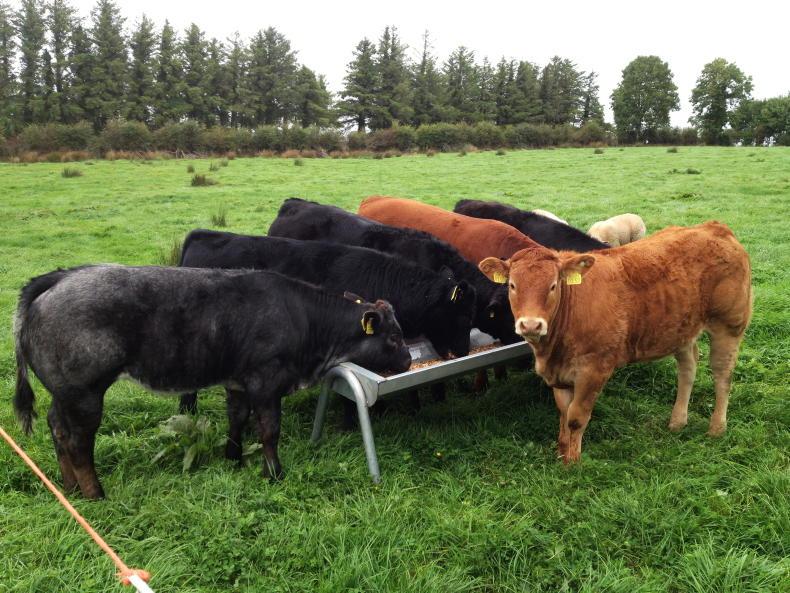Beef scheme meal feeding
The meal feeding requirement in the National Beef Welfare Scheme requires feeding of meal to calves for a minimum period of four weeks pre-weaning and two weeks post-weaning. Essentially, this means that calves must be weaned for a period of two weeks before moving them off farm.
There is no defined supplementation rate, but the scheme terms and conditions list a recommended daily feeding allowance of 1kg per head daily.
The terms and conditions also state that the meal fed must be a compound feedings stuff or straights containing the appropriate inclusion rate of minerals and vitamins.
If straights are being fed and more than one is being used, participants must register with the Department as a home mixer.
It is critical that the dates on invoices, weaning records, sale dates etc, align to demonstrate that feed has been provided for at least four weeks pre-weaning and two weeks post weaning. There is little merit in feeding plainer-quality heifers and calves that will be retained on the farm more than 1kg to 2kg concentrates per head daily.
Worm control
A critical task in keeping animals healthy during the weaning process is to administer worm control treatment, if required, two to three weeks in advance of weaning.
Avermectin-based products have the benefit of providing residual cover but their use needs to be strategic as there is growing issues with resistance on farms.
Where weanlings are purchased with no treatment history available and there is a fear that animals possess a heavy worm burden, then the advice is to refrain from administering an avermectin-based product, as this will lead to a rapid kill and can end up causing greater complications.
The handling of animals post-purchase should be minimised until animals have settled in to their new environment.
Variable kill out
Reports from cattle drafted for slaughter are highly variable, with significant numbers of farmers reporting poorer slaughter performance than usual in cattle killed directly off grass. It is worth taking some time to assess the condition of cattle destined for slaughtering off grass to see if they are still on track.
The low grass dry matter has curtailed performance in recent weeks, and with the season pushing on there is not expected to be a major turnaround in grass quality.
Where cattle are behind target, then introducing concentrates or increasing feeding levels where already feeding may be the best option to ensure targets are hit.
Supplementation will represent a significant cost given the high cost of concentrates, but it may be much more economical to feed now than end up struggling to finish cattle off grass later in the season or having to house cattle to finish.
Feeding 2kg to 3kg concentrates daily to early maturing animals will typically suffice while, where fat cover is questionable on continental cattle, then feeding rates may need to be close to double this level. The other option which can be considered is the live trade.






 This is a subscriber-only article
This is a subscriber-only article










SHARING OPTIONS: